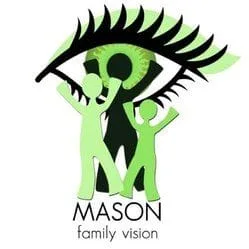Nearsightedness, or myopia, as it is medically termed, is a vision condition in which near objects are seen clearly, but distant objects do not come into proper focus. Nearsightedness occurs if your eyeball is too long or the cornea has too much curvature, so the light entering your eye is not focused correctly.
Nearsightedness is a very common vision condition that affects nearly 30 percent of the U.S. population. Some evidence supports the theory that nearsightedness is hereditary. There is also growing evidence that nearsightedness may be caused by the stress of too much close vision. It normally first occurs in school-age children. Because the eye continues to grow during childhood, nearsightedness generally develops before age 20.
A sign of nearsightedness is difficulty seeing distant objects like a movie or TV screen or chalkboard. A comprehensive optometric examination will include testing for nearsightedness. Drs. John and Katie Mason can prescribe eyeglasses or contact lenses to optically correct nearsightedness by altering the way the light images enter your eyes. You may only need to wear them for certain activities, like watching TV or a movie or driving a car, or they may need to be worn for all activities.
Providing Quality Eye Care For Your Family
Text 803-865-5520 Today
MASON FAMILY VISION
141 Wildewood Park Drive
Columbia, SC 29223
Myopia
Locations
Find us on the map
Office Hours
Monday:
7:30 am-4:30 pm
Tuesday:
7:30 am-4:30 pm
Wednesday:
7:30 am-4:30 pm
Thursday:
7:30 am-4:30 pm
Friday:
7:30 am-1:00 pm
Saturday:
Closed
Sunday:
Closed
